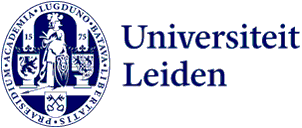
Students work on a cold case: ‘We look in a different way than the police’
Sixteen master’s students from a variety of disciplines are helping The Hague Police to find new clues in a cold case. ‘The photographs are like the ones you see on television, but when you realise you’re looking at a real body, it’s a different story.’
In a Leiden Law School classroom (Kamerlingh Onnes Building) there are seven students, some sitting on chairs at a table, others on the table. They speak enthusiastically about the ‘Cold Cases’ course, which they’ve already been doing for three months. They frequently have to stop and think carefully about their words, because they’re not permitted to share everything about the cold case. Noa: ‘We’re not allowed to talk about the case with anyone outside this room. I notice that friends and family are very curious about it and sometimes it’s really frustrating that you can’t talk about something you’re working on and feeling so enthusiastic about.’
The reason for this secrecy is that some evidence was deliberately withheld from the publicity by the police, so that if they find later that someone knows certain details, they can then connect them to the case. The secrecy is also necessary to protect people who made a statement or are named in the evidence.
Crime scene photos
Although the students aren’t permitted to say anything about the content of the cold case itself, they can say plenty about how they approached their investigation. ‘It’s a unique situation,’ says Angelina. ‘We have access to everything that’s known about the case: statements, photographs and the investigation that was carried out. At first it’s an awful lot of information and you think: what am I supposed to do with all this? But gradually you start to get a clearer picture of the case.’
'At first it’s an awful lot of information and you think: what am I supposed to do with all this?'
Following the advice of the police, the students first looked at the photos of the cold case. They could then study them with fresh eyes, without being influenced by what it says in the file. Noa: ‘The photos are like the ones you see in police series on television, but when you realise you’re looking at a real body, it’s a different story.’ One of the students says: ‘When I was lying in bed, I thought: it wasn’t exactly great to have seen that.’
By first looking at the photos, the students could think of scenarios about what might have happened. ‘We look in a different way than the police, and perhaps see something that they didn’t see.’
Students from different master’s programmes
They then started to read the hundreds of pages in the file. In order to reach a possible solution to the case, it’s necessary to have perspectives and knowledge from different disciplines. This is why students from all master’s programmes could apply for this extracurricular master’s elective. Out of all the applicants, sixteen students were ultimately selected, from programmes including forensic criminology, law, psychology and journalism.
‘You read things and you think: why wasn’t this asked?’
Frustration
The whole investigation occasionally resulted in frustration. ‘You read things and you think: why wasn’t this asked?’ And sometimes there’s something missing, such as an eye witness who wasn’t interviewed (or so it seems). It sometimes happens in the police that file documents of certain cold cases have been found in desk drawers of detectives from that time, instead of in the filing cabinets. ‘We’re restricted in what we can and can’t do,’ say the students. For instance, they’re not permitted to do any active investigation themselves, which means they can’t interview people. So they’re not allowed to even ask that one question that’s missing from the file.
After reading the whole file, the students made an inventory. Unfortunately, it didn’t look as exciting as the ones in the crime films, they said. No pieces of red string running criss-cross over a board, just an Excel file containing information like the leads that were found, statements and relationships between people.
The police kept their distance during the entire process, in order to avoid influencing the group. However the students could call in the assistance of experts, as long as they received permission for this. For example, they spoke with a firearms expert and someone from digital forensics.
Crime statistics
Finally, the students focussed on the non-forensic part of the investigation. Without saying exactly what they did, university lecturer Linda Geven explains what we should imagine here. ‘It’s about crime statistics and how closely our case matches those. For example: how often is someone shot dead and is it then done by a stranger or someone who knows them?’
The university lecturer has been teaching the course for four years now and sees that there are big differences in what the students focus on. ‘Last year, for instance, the students reconstructed a crime scene and tested all kinds of things. To give an example, they researched the length of time that blood will drip from an object before it congeals, and what the distance is between the drops if someone is walking or running. This year the investigation is rather more theoretical.’
At the end of the course, the students give the police a number of recommendations that may help them to solve the cold case. The students will not be informed whether the police ultimately do anything with these recommendations and, if so, what it is. That’s a secret too.
Text: Dagmar Aarts
